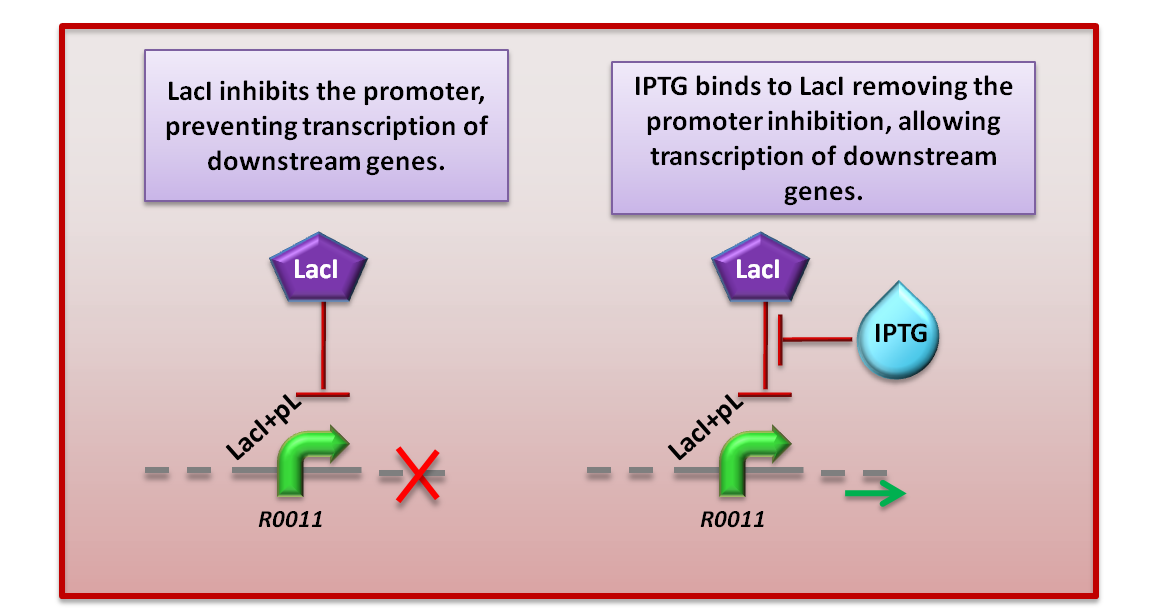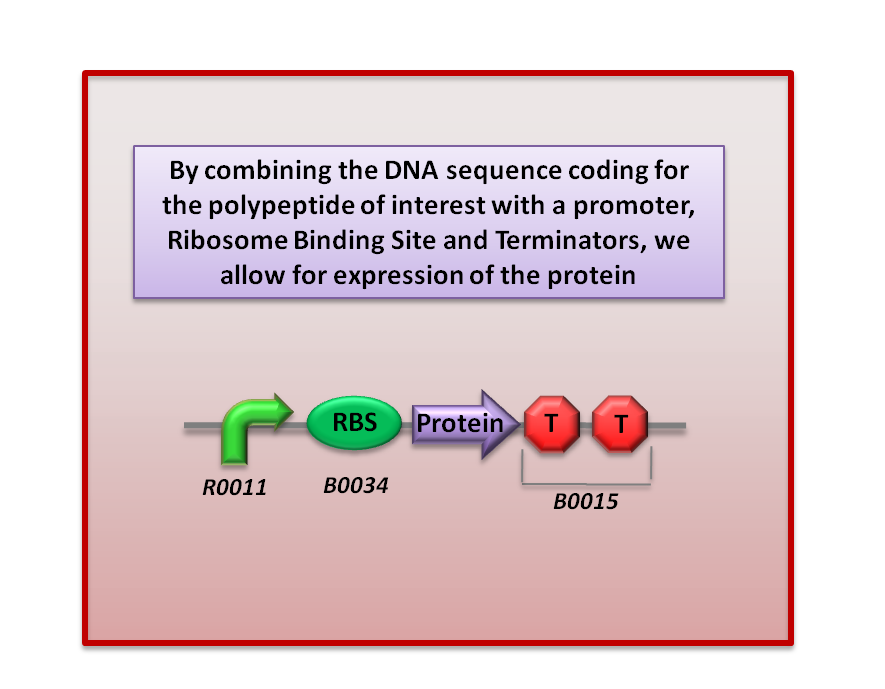Team:Imperial College London/M1/Genetic
From 2009.igem.org

Contents |
M1 Genetic Circuit
Initiation
The module has been put under the control of an inducible promoter. Under normal circumstances the promoter is repressed by the presence of LacI protein, which stops the RNA polymerase from transcribing [ref]. When IPTG is introduced, it binds to the LacI protein and it changes its conformation, preventing it to bind to the promoter. This lifts the repression [ref here] and allows the downstream genes to be transcribed.
Polypeptide Production
Engineering The E.ncapsulator to produce proteins is quite simple. DNA is transcribed into mRNA which is in turn translated into protein. By knowing the amino acid sequence of the polypeptide of interest and working backwards, this can be converted into a DNA sequence coding for production of the protein. In our case this has been developed further by optimising the DNA sequence for Escherichia Coli. By combining this coding sequence the other necessary genetic components, we engineer the chassis to manufacture the protein.
This is the genetic circuit responsible protein drug fabrication (Module 1).
LacI is produced constitutively by the E. coli bacterium, and it represses the pLambda promoter. This inhibits production of the proteins of interest (PAH and cellulase).
To start the drug manufacturing process, IPTG is pipetted into the system. IPTG will repress LacI. As a result, protein production is de-repressed. Then, the enzymes PAH or cellulase will be produced by the E.ncapsulator.
Module 1: Enzyme Production






 "
"






